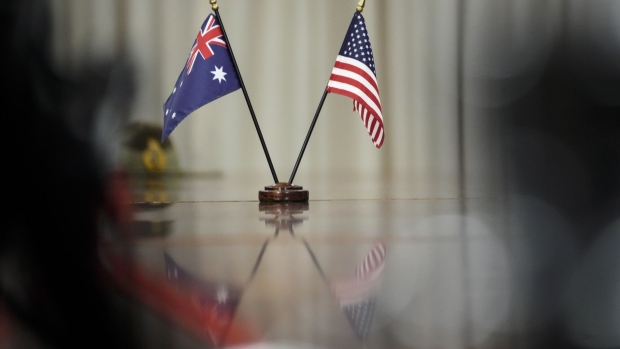Jul 21, 2023
US Military Power Display Jars With Australia’s Diplomacy Stance
, Bloomberg News

(Bloomberg) -- Australia’s alliance with the US will be on full display as high-level talks and military exercises get under way — a demonstration of power that may overshadow Canberra’s efforts at a nuanced foreign policy in the Asia-Pacific.
Australian and US forces on Saturday begin two weeks of drills as part of “Exercise Talisman Sabre.” It will be the largest version of the regular military exercises yet, with 30,000 personnel from about a dozen countries participating, including in livefire drills and amphibious landings off Australia’s northeast coast.
At the same time, the US will officially commission a new vessel in Sydney, the USS Canberra, one of just a handful of warships to be commissioned outside of American waters. The ship is named after Australia’s capital city.
The show of unity and strength highlights the new level of US-Australia ties as Washington aims to assemble a coalition of like-minded states to discourage potential Chinese aggression. Australia’s position between the Indian and Pacific Oceans, its proximity to the region and its eight-decade alliance with Washington make it a perfect partner.
Yet Australia is also in a complicated spot. Not only is China its largest trading partner and the key driver of its prosperity over the past 20 years, but the center-left government has sought to forge a more independent foreign policy stance since taking office in May 2022 to avoid being seen as a US proxy.
The high-profile military exercises might suggest otherwise to a skeptical regional audience.
Melissa Conley Tyler, executive director of the AP4D foreign policy think tank, said while the government under Prime Minister Anthony Albanese had softened its diplomatic rhetoric and language in the past year, the US alliance would always be a cornerstone of Australia’s foreign policy.
“I think for a lot of Southeast Asians they do find it hard to understand the closeness of Australia’s relationship with the US,” she said.
Next week, the Biden administration’s top defense and foreign affairs officials jet into Australia for an annual meeting with their local counterparts. Secretary of State Antony Blinken and Secretary of Defense Lloyd Austin are expected to meet with Foreign Affairs Minister Penny Wong and Defence Minister Richard Marles in Brisbane.
“Australia’s defence cooperation with the United States is unprecedented in scale, scope and significance,” Marles said in a statement ahead of the visit. “Australia will continue to work with our partners, including the United States, to build a region that is peaceful, stable and prosperous.”
Under former center-right Prime Minister Scott Morrison, diplomatic and military ties between Australia and the US grew closer than ever, including the AUKUS partnership that was signed by Morrison. Under the deal, Australia will purchase a fleet of nuclear-powered submarines from the US, among other technological partnerships.
But since the change of government 14 months ago, Labor Prime Minister Anthony Albanese and his team have sought to pivot Australia back to a more centrist foreign policy. In speeches earlier this year, senior Australian ministers emphasized the importance of regional powers and played down the need for a binary choice.
The Asia-Pacific region is not an “arena for the ambitions of others,” Albanese said in Singapore last month, adding that major powers had a responsibility to maintain stable relations with each other.
It was an unsubtle message to both China and the US. “I can assure you, that when Australia looks north, we don’t see a void for others to impose their will,” the Australian leader said.
Herve Lemahieu, director of research at the Sydney-based Lowy Institute, said there was a risk that Australia could be seen as speaking one way in Southeast Asia and then later behaving differently when talking to the US.
He said the government was trying to “have your cake and eat it” but there was a tolerance for Australia’s closeness with the US in Southeast Asia. “There is a window of opportunity here to try and seize that moment to nuance in our diplomacy,” he said.
(Corrects paragraph three in report published July 22 to make clear it is in reference to a warship)
©2023 Bloomberg L.P.